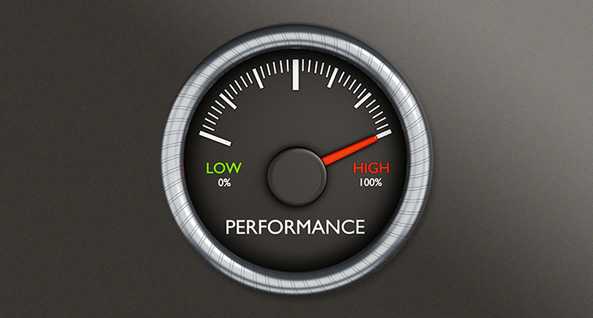Incentives, Motivation and Workplace Performance
 New study proves that properly constructed incentive programs can increase performance by as much as 44%.
New study proves that properly constructed incentive programs can increase performance by as much as 44%.
Despite the fact that U.S. organizations spend over $100 billion annually on incentive programs, many business people question their effectiveness. Now, a ground-breaking study proves that incentive programs can boost performance by anywhere from 25 to 44 percent, but only if conducted in ways that address all issues related to performance and human motivation. The study found that most organizations lack the knowledge or will to create properly constructed programs that yield desired results.
The Incentive Federation determined in 2000 that North American organizations spent approximately $27 billion a year on merchandise and travel incentives. Cash incentives included, the total exceeds $115 billion. But surprisingly, few organizations apply formal return on investment processes or measures to their incentive program design.
Numerous researchers have studied the impact of incentives and related programs for at least 100 years without establishing a clear consensus among business circles as to whether or not incentive programs deliver measurable and meaningful performance results. “Incentives, Motivation and Workplace Performance: Research & Best Practices,” conducted by researchers for the International Society of Performance Improvement, and funded with a grant by the SITE Foundation, was designed to analyze the complete body of scientific research on incentive programs, determine what if any research supported conclusions exist as to their effectiveness and the circumstances under which they can succeed, and to benchmark these findings with actual business conditions through surveys and interviews with business executives whose organizations use incentives.
The study was designed to help answer four questions: Do incentives increase work performance (and under what circumstances)? Which incentive programs are most effective? What types of organizations need incentives? And what model best expresses how to select and implement successful programs?
The report also yielded an eight-step model describing the process by which incentive programs can best be designed to influence performance.
META-ANALYSIS REVEALS POSITIVE IMPACT
The researchers began by conducting a thorough “meta-analysis” of existing, scientific research on incentive programs to identify any trends regarding their effectiveness, and the elements that lead to success or failure. The search process included every known source of research on the topic, excluding those studies that failed to live up to or disclose verifiable research practices, or those conducted by commercial organizations with some potential axe to grind. The final meta-analysis was based on 45 existing studies that met researchers’ exacting standards.
To compare research results with current practices, researchers conducted surveys via the Internet and telephone of 145 U.S. organizations that use incentive systems.
“Seeing the pool build was particularly exciting for myself and for the team. It encouraged people to put forth more effort.” —study respondent.
KEY FINDINGS
The meta-analysis of research and subsequent surveys yielded surprising evidence about the effectiveness of incentive programs and the elements behind success. Here are some of the key findings:
“Do incentives increase work performance? The overall answer… is a definite, enthusiastic yes.” —study authors…
• Incentive programs improve performance. If selected, implemented, and monitored correctly, incentive programs— with awards in the form of money or tangible awards increase performance by an average of 22 percent. Team incentives can increase performance by as much as 44 percent.
• Incentive programs engage participants. The research found that incentive programs can increase interest in work. When programs are first offered for completing a task, a 15 percent increase in performance occurs. Asked to persist toward a goal, people increase their performance by 27 percent when motivated by incentive programs. When incentive programs are used to encourage “thinking smarter,” performance increases by 26 percent.
• Incentive programs attract quality employees. Organizations that offer properly structured incentive programs can attract and retain higher quality workers than other organizations.
• Longer-term programs outperform short-term programs. The study found that incentive programs that run for a year or more produced an average 44 percent performance increase, while programs running six months or less showed a 30 percent increase. Programs of a week or less yielded a 20 percent boost.
• Executives and employees value incentive programs. All things considered, both employees and managers say they highly value incentive programs. Nonetheless, 98 percent of survey participants complained about their implementation. A program’s success and return on investment, obviously, depends on how well it’s operated.
• Quota-based incentive measures work best. Programs that reward performance based on meeting or exceeding goals generate the most positive results. Piece-rate programs, for doing more of something, also provide positive results, according to the research. Least effective (yet commonly used) are tournament- based programs; i.e., closed-ended programs that reward a pre-selected number of winners, as opposed to open-ended, quota-based, or piece-rate programs that give everybody a chance at success.
More research is needed on the use of non-cash tangible rewards, as opposed to cash. The researchers cited a lack of sufficient research to isolate the relative motivational value of cash versus non cash awards, or to determine whether or not companies can get the same or more motivation for less money by using non-cash awards. Nor does sufficient research exist to measure the impact of cash incentive awards on compensation or pricing strategies. Companies may actually be able to get more motivational impact for less money if employees can choose their own rewards. Finally, the researchers suggested that many programs using non-cash awards do not follow the guidelines for successful program implementation, outlined on page four.
“In 92 percent of cases, objectives were surpassed, met, or partially met.”
THE CONDITIONS FOR SUCCESS
The study isolated five conditions under which incentive programs work best:
1. Current performance is inadequate.
2. The cause of the inadequate performance is related to deficiencies in motivation.
3. The desired performance type and level can be quantified.
4. The goal is challenging but achievable.
5. The focus on promoting a particular behavior does not conflict with or override everyday organizational goals.
IMPLEMENTATION STEPS
The study included a model for developing effective incentive programs and diagnosing existing ones, known as the Performance Improvement By Incentives (PIBI) model. The model is based on a complete review of research and survey findings.
ABOUT THE RESEARCHERS
Clark is professor of educational psychology and technology at the University of Southern California; Condly is assistant professor of educational studies at the University of Central Florida; Stolovitch is a Principal with the learning and performance group Harold D. Stolovitch & Associates.

